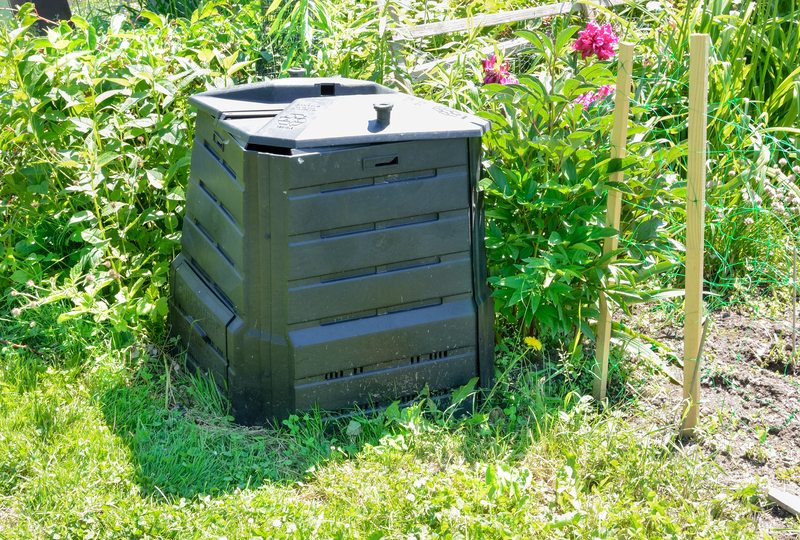Creating Impactful Recycling Programs in Schools: An In-Depth Guide
With climate change and environmental awareness moving to the forefront, initiatives to create impactful recycling programs in schools are essential. Not only do these efforts reduce waste, but they also cultivate a sense of environmental responsibility among students that can last a lifetime.

Why Are Recycling Programs in Schools Important?
Schools are vibrant communities that generate large amounts of waste every day, including paper, plastic, and food scraps. Implementing recycling initiatives in schools transforms campuses into models of sustainability and community leadership, and can significantly reduce landfill waste. By encouraging students to recycle and understand the impact of their actions, we empower the next generation to think green.
- Educational Value: Recycling programs teach students valuable lessons in environmental science and stewardship.
- Waste Reduction: Schools can dramatically decrease their waste output by properly sorting and recycling materials.
- Community Impact: Students often take these practices home, promoting recycling in their neighborhoods as well.
Steps to Designing Effective School Recycling Programs
1. Assess Needs & Set Clear Goals
The first step in building a successful recycling program in your school is to conduct a waste audit. Determine the types of waste your school produces--paper, plastics, glass, organics, and electronics. Based on this, set measurable, achievable objectives for your recycling initiative. For example, aim to reduce paper waste by 50% in the first year or recycle all aluminum cans from the cafeteria.
2. Gain Administration and Staff Support
Any impactful school recycling project requires buy-in from teachers, custodians, and administrators. Meet with key stakeholders to share statistics on school waste and the benefits of a strong recycling initiative. Advocate for sustainability to be included in the school's strategic plan or mission statement.
3. Form a Green Team
One proven strategy is creating a Green Team, composed of motivated students, teachers, and custodians. This team leads the program, monitors progress, and promotes recycling awareness throughout the school community. Encourage diverse participation by inviting representatives from each grade level.
4. Choose the Right Recycling Services
Partnering with a local recycling service ensures that collected materials are actually processed effectively. Reach out to your city or municipal waste provider to find out what materials they process and how often pickups can be scheduled. If possible, tour a nearby recycling facility so that students can see where their materials are going.
5. Strategically Place Bins and Signage
Visibility is key! Place recycling bins in high-traffic areas such as cafeterias, classrooms, hallways, and sports facilities. Use clear, color-coded bins and easy-to-understand signage that details what can and cannot be recycled. Consider including pictures for younger students.
- Papers only: classrooms, offices, and libraries
- Cans and bottles: cafeterias, gymnasiums, and event spaces
- Food compost: lunchrooms and kitchen areas
6. Educate and Engage Students
Education is fundamental to every successful school recycling program. Consider integrating recycling education into science, social studies, or extra-curricular activities. Host assemblies, poster contests, and guest speakers. You can even organize field trips to landfill and recycling centers for firsthand experience.
Interactive recycling challenges, such as "Which class can recycle the most paper this month?" encourages teamwork and long-term behavior change.
7. Track, Celebrate, and Report Progress
Routine tracking of recycling rates helps keep momentum high. Assign a student or staff member to record how much material is being recycled and how much waste is diverted from landfill. Share this data with the entire school during assemblies, in newsletters, or with posters in the hallway.
Celebrate milestones with school-wide announcements, award certificates, or eco-friendly prizes. Recognizing effort is vital to long-term success!
Key Elements of Successful School Recycling Initiatives
Comprehensive Waste Audits
Before starting a recycling program, perform a thorough waste audit. Waste audits reveal the kinds and quantities of recyclable and compostable materials. Involve students in the process--they'll see firsthand the amount of waste generated and become more invested in solutions.
Regular Education and Awareness Campaigns
- Classroom Presentations: Regular sessions about the importance of recycling, litter reduction, and sustainability.
- Peer Teaching: Older students can teach younger ones about sorting recyclables or the lifecycle of materials.
- Visual Campaigns: Posters, murals, and informative signage placed throughout the school remind students and staff to recycle.
Community and Parent Involvement
Impactful recycling programs in schools often extend their reach by involving parents and the broader community. Organize recycling days where families can bring materials from home, or run e-waste drives for discarded electronics. Also, include updates in newsletters and at PTA meetings.
Ongoing Feedback and Program Adjustment
Collect regular feedback from students, teachers, and custodians about what's working and where the recycling workflow can improve. Adapt your program based on challenges such as contamination or overfilled bins. Advanced programs introduce composting, electronics recycling, or upcycling art projects once traditional recycling is running smoothly.
Innovative School Recycling Program Ideas
- Recycling Competitions: Host friendly contests between grades or classrooms to see who can recycle the most or generate the least trash.
- Upcycling Workshops: Organize workshops that turn recyclables into creative projects, from art to classroom supplies.
- Green Ambassadors: Train student leaders to promote the recycling initiative and monitor bins.
- Zero-Waste Lunches: Encourage students to bring reusable lunchboxes and utensils.
- Social Media Campaigns: Highlight your school's recycling efforts online, share tips, and celebrate milestones.
- Partnerships with Local Businesses: Enlist support or sponsorship for materials, awards, or educational visits.
Overcoming Common Challenges with School Recycling Programs
Addressing Contamination
One of the biggest obstacles is contamination--non-recyclable items ending up in recycle bins. Minimize this with ongoing education, clear signage, and regular reminders.
Maintaining Student Engagement
Keep students motivated by rotating leadership roles, offering incentives, and involving them in program decisions. Solicit ideas on how to make recycling fun and relevant to their everyday lives.
Lack of Resources
Many schools cite limited funding as a barrier. Look for community grants, public-private partnerships, and fundraising opportunities. Local governments, non-profits, and businesses are often happy to support schools with bins, signage, or educational materials.
Benefits of School Recycling Initiatives: More Than Just Waste Reduction
- Environmental Stewardship: Students develop lifelong habits that benefit the planet.
- Cost Savings: Reducing landfill waste can lower disposal costs, allowing funds to be directed elsewhere.
- Leadership & Teamwork: Running a program develops organizational, teamwork, and leadership abilities.
- Academic Enhancement: Incorporating sustainability into the curriculum enriches science, math, and civic studies.
Success Stories: Examples of Impactful Recycling Programs in Schools
- Paper Reduction Campaigns: Schools with student-led initiatives to digitize assignments and newsletters have cut their paper consumption by up to 60%.
- Compost Stations in Cafeterias: Separating food scraps for composting has inspired gardening clubs and reduced cafeteria waste by hundreds of pounds per year.
- Bottle and Can Collection Drives: Schools with well-promoted bottle and can drives have not only raised funds for school projects but turned recycling into a school tradition.

Best Practices for Creating Impactful Recycling Programs in Schools
- Start Small, Think Big: Begin with a paper or can recycling effort, then expand into organics, textiles, and electronics as the program matures.
- Engage Everyone: Involve teachers, staff, students, parents, and local community members for broader impact.
- Set SMART Goals: Goals should be Specific, Measurable, Achievable, Relevant, and Time-bound.
- Celebrate Success: Recognize and reward achievements through announcements, certificates, or eco-friendly prizes.
- Continuously Educate: Keep the program fresh and relevant with recurring education campaigns and new initiatives.
Conclusion: Empower the Next Generation with Effective School Recycling Programs
Creating impactful recycling programs in schools is more than just reducing waste--it's about inspiring a new generation of informed, environmentally responsible citizens. By conducting thorough waste audits, involving the entire school community, providing regular education, and celebrating every milestone, schools become leaders in sustainability.
Remember, the success of a recycling program is not only measured in pounds of waste diverted, but in the positive habits and values instilled in students. Start your sustainable journey today: empower your school community to recycle, reduce, and rethink waste for a greener future.